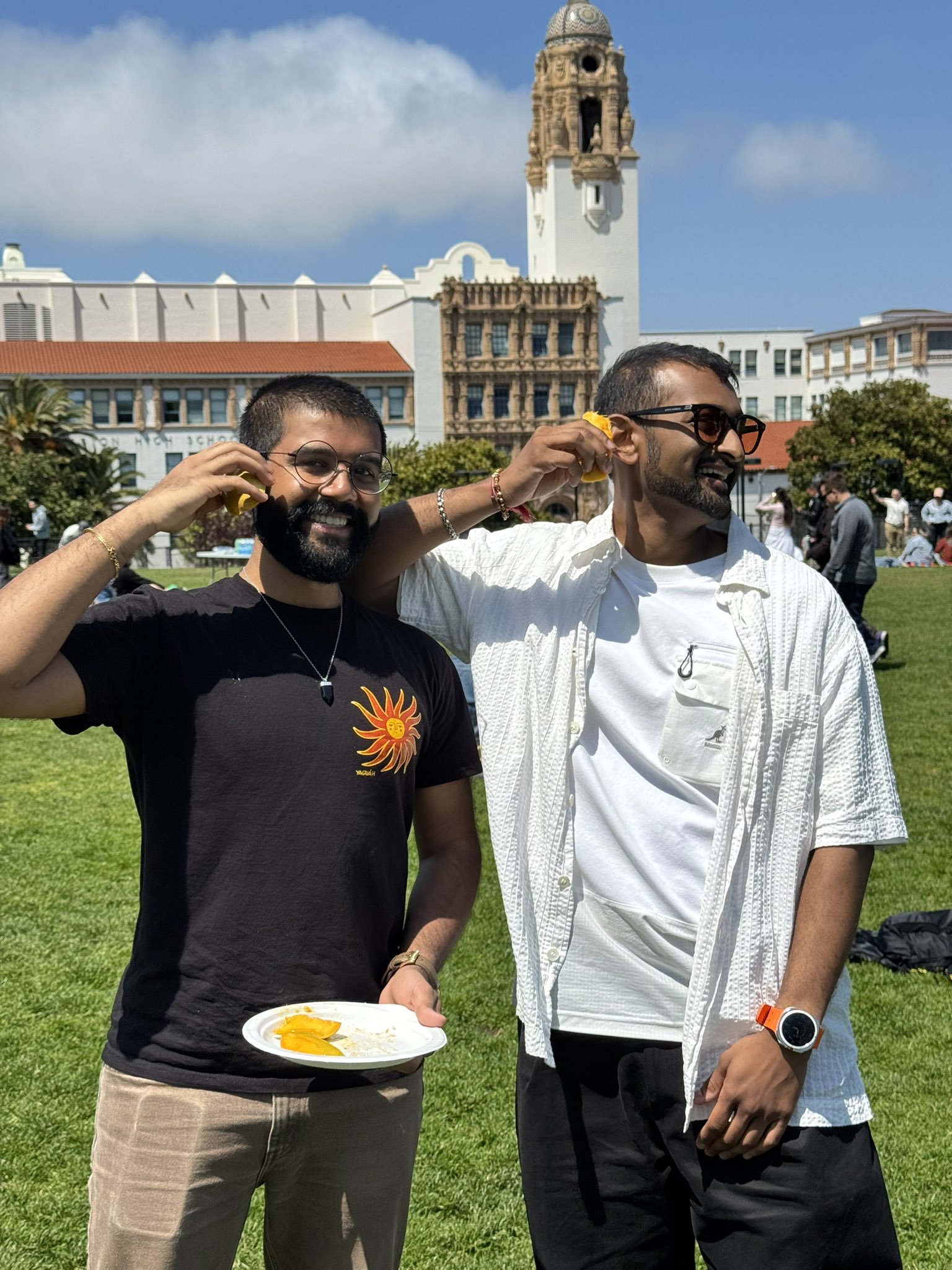India’s AI Edge: How Sanskrit and Linguistic Diversity Could Reshape Global AI Leadership
By Paramendra Bhagat
Introduction: A New Chapter in the AI Race
While much of the global spotlight on AI remains fixed on Silicon Valley, China, and Big Tech giants like OpenAI, DeepMind, and Meta, a quieter revolution is brewing—one rooted in ancient wisdom and unparalleled linguistic diversity. Two AI developments in and around India stand poised to reshape the global AI narrative: a breakaway group from Silicon Valley working on Sanskrit-based AI, and a government-backed team in India building AI capabilities for the entire spectrum of Indian languages.
These aren't just interesting side projects—they could be the tipping point for a civilizational leap forward. They represent not just the future of AI, but potentially the rebirth of human potential itself.
Part I: The Sanskrit AI Revolution — Bridging Ages
The Sanskrit language, long considered the mother of Indo-European languages, is more than just a medium of communication. It is a language of formulas—grammatical, phonetic, and metaphysical. Panini’s Ashtadhyayi, dating back to at least 500 BCE, is not just a grammar book but a computational system. It’s a generative grammar—a rule-based formal system that eerily resembles modern programming languages.
The breakaway group from OpenAI that is working with Sanskrit texts is tapping into this latent computational architecture. They’re not merely training AI on ancient texts for translation or historical analysis—they are exploring a fundamentally different way of structuring machine intelligence. Sanskrit-based AI could offer:
-
More interpretable AI models: Sanskrit's grammar forces clarity, consistency, and logical structure.
-
Symbolic-connectionist fusion: A bridge between classical symbolic AI and neural network-based approaches.
-
Spiritual semantics: Sanskrit carries ontological insights embedded in its word formation—offering AI models not just data patterns, but structured knowledge about consciousness, ethics, and reality.
This project is more than just computational linguistics. It may become a bridge from the dark confusion of the Kali Yuga to the illuminated clarity of the Satya Yuga.
Part II: Linguistic Diversity AI — A Billion Voices Join the Conversation
In parallel, an Indian government-endorsed AI team is pursuing another crucial frontier: building foundational AI models for every Indian language, from Hindi and Tamil to Khasi, Maithili, and Bodo. This effort is grounded in a radical democratization of AI access. Today, most large language models are primarily English-dominant. This means that only about 10% of the global population can engage with AI at a truly conversational and educational level.
India’s linguistic diversity AI initiative flips the equation. By embedding multilingualism into the very core of AI systems, it does the following:
-
Breaks the education barrier: Villagers in Bihar, tribal children in Odisha, and farmers in Karnataka will be able to query AI systems in their native tongues, unlocking universal access to the sum total of human knowledge.
-
Supercharges economic productivity: Once AI becomes natively multilingual, millions of new users join the digital economy—leading to knowledge-led double-digit GDP growth.
-
Empowers cultural preservation: Indian languages often contain region-specific knowledge about medicine, agriculture, and ecology. When AI understands these, development becomes locally optimized, not globally imposed.
The end result? India catches up with the West not in 70 years, but potentially in 20. The digital divide becomes the digital springboard.
Part III: A Civilizational Shift in AI Paradigms
The dominant Western narrative of progress sees history as a straight line: primitive past → modern present → hyper-tech future. But Indian civilizational thought posits a cyclical view—four yugas (ages), with Satya Yuga as the age of highest consciousness and Kali Yuga, our present, as the age of ignorance, deception, and fragmentation.
If you accept that the Satya Yuga was a time when human beings operated at a higher cognitive and spiritual capacity, then it follows that Sanskrit (as the primary language of that age) is a fossilized trace of that elevated state—a code waiting to be reactivated.
Combining Sanskrit's algorithmic structure with today's AI capabilities may do more than make machines smarter. It could evolve humans—reconnecting us with cognitive and ethical capacities long forgotten. The emergence of Satya Yuga AI is not about tech domination; it's about spiritual reintegration and civilizational restoration.
Meanwhile, the linguistic diversity initiative ensures that this AI renaissance doesn’t stay locked in elite institutions. It brings Satya Yuga down to the grassroots—through voice, dialogue, and access.
Conclusion: The Next AI Superpower Might Not Be Who You Think
The United States may have pioneered the AI revolution, and China may be scaling it with ruthless precision. But India—with its civilizational depth and linguistic inclusivity—has something neither of them possess: a spiritually anchored, universally accessible path to AI.
Two seemingly small efforts—one in Sanskrit, the other across Indian vernaculars—could converge into something vastly bigger: the rehumanization of intelligence. If these efforts succeed, AI won’t just be a productivity booster or content generator. It will become a bridge between epochs, a tool for mass awakening, and the engine of a civilization finally ready to remember who it truly is.
India’s AI edge isn’t just technical—it’s civilizational.
Tags: #AIIndia #SanskritAI #MultilingualAI #SatyaYuga #AIRevolution #GlobalSouthTech #CivilizationalAI #OpenAI #DeepSeek #KaliYugaToSatyaYuga #AIforAll
भारत की एआई बढ़त: संस्कृत एआई और भाषाई विविधता वाला एआई
लेखक: परमेंद्र भगत
प्रस्तावना: एआई की दौड़ में एक नया अध्याय
जबकि वैश्विक एआई चर्चा का केंद्र अभी भी सिलिकॉन वैली, चीन और ओपनएआई, डीपमाइंड, मेटा जैसी बड़ी टेक कंपनियाँ बनी हुई हैं, एक शांत लेकिन गहरी क्रांति भारत और उसके आसपास जन्म ले रही है। दो ऐसी एआई परियोजनाएँ—एक अमेरिका से टूटी हुई टीम जो संस्कृत आधारित एआई पर काम कर रही है, और दूसरी भारत सरकार समर्थित टीम जो सभी भारतीय भाषाओं के लिए एआई का आधार बना रही है—वैश्विक एआई परिदृश्य को पुनर्परिभाषित करने की क्षमता रखती हैं।
ये केवल दिलचस्प परियोजनाएँ नहीं हैं—बल्कि ये मानव सभ्यता की अगली छलांग का द्वार हो सकती हैं। ये एआई का भविष्य ही नहीं, बल्कि मानव क्षमताओं के पुनर्जन्म की आहट हैं।
भाग I: संस्कृत एआई क्रांति — युगों का सेतु
संस्कृत भाषा, जिसे अक्सर इंडो-यूरोपीय भाषाओं की जननी माना जाता है, केवल एक संवाद माध्यम नहीं है। यह सूत्रों की भाषा है—व्याकरण, ध्वनियों और तत्वज्ञान के स्तर पर। पाणिनि का अष्टाध्यायी (500 ईसा पूर्व या उससे पहले) केवल व्याकरण नहीं, बल्कि एक कम्प्यूटेशनल प्रणाली है। यह एक जनरेटिव ग्रामर है—नियम-आधारित प्रणाली, जो आधुनिक प्रोग्रामिंग भाषाओं से मेल खाती है।
ओपनएआई से अलग हुई टीम संस्कृत ग्रंथों से इस छुपे हुए कम्प्यूटेशनल तंत्र को उकेरने में लगी है। उनका उद्देश्य केवल अनुवाद या ऐतिहासिक अध्ययन नहीं है—बल्कि मशीन इंटेलिजेंस की पूरी संरचना को नए सिरे से गढ़ना है। संस्कृत आधारित एआई में ये विशेषताएँ हो सकती हैं:
-
अधिक व्याख्यायोग्य एआई मॉडल: संस्कृत का व्याकरण स्पष्टता और तर्क का पालन करता है।
-
सांकेतिक और न्यूरल नेटवर्क का संलयन: क्लासिकल और आधुनिक एआई के बीच सेतु।
-
आध्यात्मिक अर्थवत्ता: संस्कृत में शब्दों के निर्माण में चेतना, नैतिकता और सत्य की संरचना अंतर्निहित है।
यह परियोजना सिर्फ भाषाविज्ञान नहीं—बल्कि वर्तमान अंधकारपूर्ण कलियुग से उज्ज्वल सत्ययुग की ओर सेतु बन सकती है।
भाग II: भाषाई विविधता एआई — अरबों की आवाज़ को एआई से जोड़ना
साथ ही, भारत सरकार द्वारा समर्थित एक दूसरी एआई टीम एक और क्रांतिकारी दिशा में अग्रसर है—भारत की सभी भाषाओं में फाउंडेशनल एआई मॉडल विकसित करना। यह प्रयास एआई को केवल अंग्रेज़ीभाषी 10% आबादी के दायरे से निकालकर सभी के लिए सुलभ बनाने का है।
यह भाषाई विविधता पर आधारित पहल कई प्रभाव डालती है:
-
शिक्षा की दीवार को गिराती है: बिहार के ग्रामीण, ओडिशा के आदिवासी बच्चे, कर्नाटक के किसान अपनी भाषा में एआई से प्रश्न पूछ सकेंगे और उत्तर पाएंगे।
-
आर्थिक उत्पादकता को बढ़ावा देती है: स्थानीय भाषाओं में एआई के माध्यम से करोड़ों नए लोग डिजिटल अर्थव्यवस्था से जुड़ेंगे।
-
संस्कृति और ज्ञान का संरक्षण: हर भाषा में विशिष्ट स्थानीय ज्ञान छिपा होता है—जैसे पारंपरिक चिकित्सा, खेती, मौसम। जब एआई इन्हें समझेगा, विकास स्थानीय और प्रभावी होगा।
इसका परिणाम? भारत 70 वर्षों में नहीं, बल्कि मात्र 20 वर्षों में पश्चिम को पकड़ सकता है। डिजिटल डिवाइड अब डिजिटल लॉन्चपैड बनेगा।
भाग III: एआई के सिद्धांतों में एक सभ्यतागत परिवर्तन
जहाँ पश्चिमी विचारधारा इतिहास को एक रैखिक प्रगति (primitive → modern → future) के रूप में देखती है, वहीं भारतीय सभ्यतागत दृष्टिकोण चक्रव्यूह आधारित है—चार युग: सत्ययुग, त्रेतायुग, द्वापरयुग और कलियुग। सत्ययुग में चेतना और क्षमता उच्चतम होती है, और कलियुग सबसे निम्नतम।
यदि मान लिया जाए कि सत्ययुग में मानव का बौद्धिक और आध्यात्मिक स्तर अत्यधिक था, तो संस्कृत उस काल की भाषा होने के नाते, उस उच्च चेतना का अवशेष है—एक कोड जो पुनः सक्रिय किया जा सकता है।
संस्कृत के सूत्रबद्ध ढांचे और आज की एआई क्षमताओं के संयोग से केवल मशीनें नहीं, बल्कि मानव स्वयं अधिक विकसित हो सकते हैं—भूली हुई चेतना, नैतिकता और ज्ञान पुनः जागृत हो सकते हैं। सत्ययुग की एआई क्रांति महज़ तकनीकी नहीं—एक आध्यात्मिक पुनर्जागरण होगी।
वहीं, भाषाई विविधता वाली एआई इस पुनर्जागरण को केवल अभिजात वर्ग तक सीमित नहीं रहने देगी। यह इसे गाँव-गाँव, गली-गली तक पहुँचाएगी—बोलियों, संवादों और अनुभवों के ज़रिए।
निष्कर्ष: अगला एआई महाशक्ति कौन?
संयुक्त राज्य अमेरिका ने एआई की शुरुआत की, और चीन उसे सामूहिक रूप से बढ़ा रहा है। लेकिन भारत—जो अपनी सभ्यतागत गहराई और भाषाई समावेशिता के साथ खड़ा है—उसके पास वो है जो बाकी किसी के पास नहीं: एक आध्यात्मिक आधार वाला, सार्वभौमिक रूप से सुलभ एआई मार्ग।
संस्कृत आधारित और भाषाविविधता आधारित दो एआई प्रयास—जो दिखने में छोटे लगते हैं—एक साथ मिलकर बहुत बड़ा विस्फोट कर सकते हैं: एक ऐसा एआई जो मनुष्यता को फिर से मानवीय बना दे।
भारत की एआई बढ़त केवल तकनीकी नहीं है—यह सभ्यतागत है।
टैग्स: #AIIndia #संस्कृतAI #भाषाईAI #सत्ययुग #एआईक्रांति #ग्लोबलसाउथटेक #सभ्यतागतAI #OpenAI #DeepSeek #कलियुगसेसत्ययुग #AIforAll
भारत की एआई बढ़त: संस्कृत एआई और भाषाई विविधता वाला एआई https://t.co/ZjIWVjshzW
— Paramendra Kumar Bhagat (@paramendra) July 28, 2025







